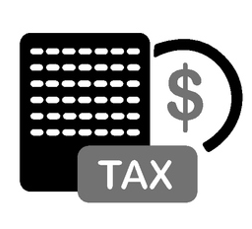Understanding the NT Tax Code and When You Need One
What is an NT Tax Code?
A NT (No Tax) code is a special tax code issued by HM Revenue & Customs (HMRC). It allows individuals to receive certain types of UK income without deductions for UK income tax. This code is typically assigned to non-residents who can prove they are no longer liable for UK taxation under specific circumstances. Such as those living abroad while receiving a UK pension.
When Do You Need a NT Tax Code?
You may need to apply for an NT tax code if:
- You live outside the UK and receive income from a UK pension scheme.
- You are considered a non-resident for tax purposes under the UK’s Statutory Residence Test.
- You qualify for tax relief under a double taxation agreement between the UK and your country of residence.
- You have income that should not be taxed in the UK but is currently subject to PAYE deductions.

Without an NT tax code, your pension provider is required to deduct income tax from your pension payments at the standard UK rate. To avoid unnecessary tax deductions, non-residents must apply for this exemption through HMRC.
How to Apply for an NT Tax Code in 2025
If you have a UK pension, such as a Self-Invested Personal Pension (SIPP), your pension income is typically subject to Pay As You Earn (PAYE) taxation. However, if you are a non-resident, you may be eligible to receive your pension income without UK tax deductions. To achieve this, you must apply for an NT (No Tax) code from HM Revenue & Customs (HMRC).
Understanding the NT Tax Code Application Process
To claim exemption from UK income tax, you need to contact HMRC directly to determine the appropriate forms based on your country of residence. You can reach HMRC at the following numbers:
- UK Callers: 0300 200 3300
- Overseas Callers: +44 135 535 9022

Alternatively, you can find information and forms online here.
If your exemption is approved, HMRC will notify your pension provider and issue the relevant tax code. However, it is advisable to confirm with HMRC before withdrawing any funds to ensure your tax status has been correctly updated. Once the NT code is in place, your pension payments will be processed without UK tax deductions.
Key Updates for 2025
- Increase in Personal Allowance: The UK government has raised the personal allowance threshold for 2025, meaning that the emergency tax code (0T Month 1) may result in a different tax deduction than in previous years. It is important to check your tax code allocation before making withdrawals.
- Digital Processing Enhancements: HMRC has introduced improvements to its digital systems, allowing for faster NT tax code processing when applications are submitted online. Paper applications may experience longer processing times.
- New Income Tax Bands: Changes to UK tax bands for 2025 could impact how emergency tax rates apply to pension withdrawals before the NT code is granted. Ensure you check the latest thresholds when planning your withdrawals.
- Extended Processing Times for Some Applications: Due to increased demand, NT tax code applications for non-residents may take longer than usual. It is recommended to start the process as early as possible.
Starting the Process
1. Initiating an Income Withdrawal
![]()
- To establish a tax record with HMRC, you must first withdraw a nominal sum from your pension. If you have not received a P60 within the last 12 months (which is only applicable if you were previously working in the UK), this initial withdrawal is necessary to trigger a tax code assignment.
- Your pension provider or one of our advisers, can assist in processing a small payment to ensure your details are registered on their payroll system. This first withdrawal will typically be taxed under an emergency tax code (0T Month 1). Until the NT code is officially recognized, it is advisable to limit drawdown withdrawals to a maximum of £1,000 to minimize potential tax deductions. The initial tax code assigned is often 1257L M1, which provides a fraction of the UK personal allowance (new threshold for 2025 to be confirmed).
- The exemption process can take several months, and if you receive additional UK-sourced income, your tax code may be adjusted accordingly.
2. Completing the Required Tax Forms

Once you have made an initial withdrawal and received your tax code, the next step is to complete the appropriate tax exemption form.
- If your country has a specific tax agreement with the UK, you must use the designated country-specific form available on the UK Government website.
- If your country does not have a designated form, complete the Form DT Individual, which applies to general double taxation agreements.
- Additionally, you should submit Form P85, which officially notifies HMRC that you have left the UK and wish to be treated as a non-resident for tax purposes.
After filling out the necessary forms, they must be submitted to your local tax authority in your country of residence. The relevant section of the form must be completed and stamped by your tax office before it is sent to HMRC.
3. Additional Considerations for Large Withdrawals

If you plan to withdraw more than £100,000 within a single tax year, you cannot apply for an NT tax code. Instead, you are required to complete a Self-Assessment tax return. The process involves:
- Registering for Self-Assessment to obtain a Unique Taxpayer Reference (UTR) number.
- Filing an SA100 Form: This is the standard Self-Assessment tax return form.
- If you are a non-UK resident, you also need to complete the SA109 Supplementary Pages.
- Filing the HS304 Claim Form to claim tax relief under a double taxation agreement.
4. How to Reclaim Overpaid Tax
 If tax has been deducted before your NT code was applied, you may be eligible for a refund. Overpaid tax can be reclaimed in one of two ways:
If tax has been deducted before your NT code was applied, you may be eligible for a refund. Overpaid tax can be reclaimed in one of two ways:
- Through Payroll: If HMRC provides the corrected tax code within the same UK tax year, your pension provider can refund the excess tax via payroll.
- Directly from HMRC: If the refund is not processed through payroll, you can claim it directly from HMRC by contacting them at the details provided earlier.
Final Thoughts
Applying for an NT tax code can be a lengthy process. But following the correct steps will help you receive your pension income without unnecessary UK tax deductions. It is always recommended to verify your tax status with HMRC before making large withdrawals. For additional guidance, you should also consult a tax professional. By following this guide, you can navigate the process and avoid potential taxation issues on your UK pension income as a non-resident.
Please feel free to contact us for more information or if you have any queries.
